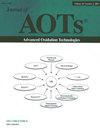Comparative studies on the performance of porous Ti/Sno2-Sb2O3/Pbo2 enhanced by CNT and Bi Co-doped electrodes for methyl orange oxidation
Q Chemistry
引用次数: 6
Abstract
Abstract: Three novel, modified PbO2 electrodes with porous titanium as the substrate were successfully prepared by the anodic deposition method. The modified electrodes contained CNT, Bi, or a combination of the two. Their microstructure and electrochemical properties were characterized by scanning electron microscopy (SEM), energy-dispersive spectroscopy (EDS), X-ray diffraction, linear sweep voltammetry and cyclic voltammetry. Further, their electrochemical active surface area was determined, and their capacity to generate hydroxyl radicals and induce electrochemical degradation of methyl orange was studied. Compared with pure PbO2, electrodes with CNT-PbO2, Bi-PbO2, and the Bi-CNT combination had PbO2 films with educed crystal sizes, which increased their specific surface area and active sites for electrochemical reactions. The Bi-CNT-PbO2 electrode had the highest oxygen evolution over potential, while the generation of hydroxyl radical (·OH) and the electro-catalytic degradation of methyl orange were significantly increased with the Bi-CNT electrode. It was demonstrated that this modification can significantly enhance performance in electro-oxidation processes, including degradation compounds. Such improvements can be of importance for the removal of organic pollutants from effluents.CNT和Bi共掺杂电极增强多孔Ti/Sno2-Sb2O3/Pbo2氧化甲基橙性能的比较研究
摘要:采用阳极沉积法成功制备了3种新型的多孔钛基PbO2修饰电极。修饰电极含有碳纳米管、铋或两者的组合。采用扫描电镜(SEM)、能谱(EDS)、x射线衍射、线性扫描伏安法和循环伏安法对其微观结构和电化学性能进行了表征。进一步测定了它们的电化学活性表面积,研究了它们产生羟基自由基和诱导甲基橙电化学降解的能力。与纯PbO2相比,cnts -PbO2、Bi-PbO2和Bi-CNT组合电极的PbO2薄膜晶粒尺寸减小,增加了其比表面积和电化学反应的活性位点。Bi-CNT- pbo2电极的析氧过电位最高,羟基自由基(·OH)的生成和甲基橙的电催化降解均显著增加。结果表明,这种改性可以显著提高电氧化过程的性能,包括降解化合物。这种改进对于从废水中去除有机污染物可能是重要的。
本文章由计算机程序翻译,如有差异,请以英文原文为准。
求助全文
约1分钟内获得全文
求助全文
来源期刊
CiteScore
0.88
自引率
0.00%
发文量
0
审稿时长
1 months
期刊介绍:
The Journal of advanced oxidation technologies (AOTs) has been providing an international forum that accepts papers describing basic research and practical applications of these technologies. The Journal has been publishing articles in the form of critical reviews and research papers focused on the science and engineering of AOTs for water, air and soil treatment. Due to the enormous progress in the applications of various chemical and bio-oxidation and reduction processes, the scope of the Journal is now expanded to include submission in these areas so that high quality submission from industry would also be considered for publication. Specifically, the Journal is soliciting submission in the following areas (alphabetical order): -Advanced Oxidation Nanotechnologies -Bio-Oxidation and Reduction Processes -Catalytic Oxidation -Chemical Oxidation and Reduction Processes -Electrochemical Oxidation -Electrohydraulic Discharge, Cavitation & Sonolysis -Electron Beam & Gamma Irradiation -New Photocatalytic Materials and processes -Non-Thermal Plasma -Ozone-based AOTs -Photochemical Degradation Processes -Sub- and Supercritical Water Oxidation -TiO2 Photocatalytic Redox Processes -UV- and Solar Light-based AOTs -Water-Energy (and Food) Nexus of AOTs

 求助内容:
求助内容: 应助结果提醒方式:
应助结果提醒方式:


